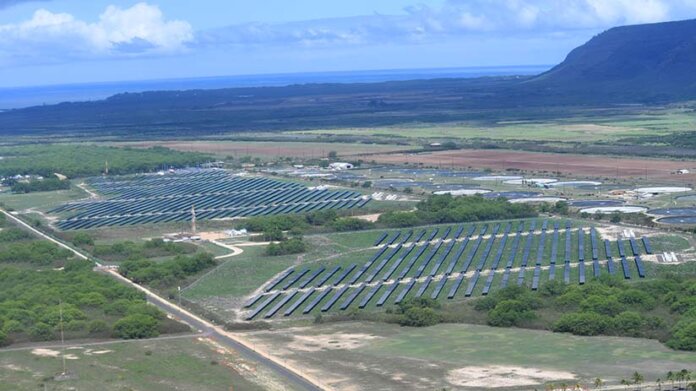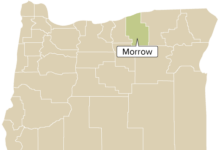For more than a decade, the National Renewable Energy Laboratory (NREL) has partnered with the U.S. Department of the Navy to support clean energy and resilience at installations across the globe. One of the latest projects was completed at the U.S. Navy’s Pacific Missile Range Facility (PMRF), located on the west side of the Hawaiian island of Kauai.
The collaborative effort brought together the U.S. Navy; the Kauai Island Utility Cooperative (KIUC), the island’s electric utility; AES, a global energy company; and NREL.
Years ago, an NREL team member on assignment with the Navy at Pearl Harbor worked with stakeholders to catalyze the project concept as part of the Navy’s initiative to deploy 1 GW of distributed energy resources to support energy resilience. The Navy issued a request for proposals (RFP), which was awarded to KIUC, which subsequently issued an RFP for project development awarded to AES. During the course of the engineering and construction process, AES sought to leverage the microgrid validation facilities at NREL’s Flatirons Campus in Colorado to configure, integrate, tune and validate the microgrid operational capabilities prior to implementation at PMRF.
Among many benefits, this project enhances PMRF’s capabilities to become self-sufficient for all its electricity needs in the event of a loss of transmission feed from the utility grid. PMRF can now leverage a 14 MW solar facility paired with a 70 MWh battery energy storage system sited on the base.
One of several innovations in this case was AES’ development of a new microgrid control strategy with automatic fast frequency and voltage response, made possible by advanced DC-coupled architecture and advanced power-electronics control. Evaluation and validation capabilities at NREL’s Flatirons Campus allowed the team to cost effectively and safely evaluate a wide variety of simulated events and conditions at PMRF.
“At the Flatirons Campus, we have many hardware components to enable technology validation,” says Przemyslaw Koralewicz, the NREL grid integration engineer who led the technology validation and evaluation. “Power hardware in the loop is a great capability that we use to show how the system we have installed at Flatirons Campus will integrate with the electrical system on the island of Kauai.”
The Navy’s PMRF manages the world’s largest instrumented training and test range, covering more than 1,100 square miles of instrumented underwater range and over 42,000 square miles of controlled airspace, with a temporary operating area of 2.1 million square miles when needed for missile testing. The microgrid that AES developed and installed on Kauai serves to provide electric power resiliency to the base. As a result, the system ensures the installation has power in case of a loss of the transmission feed from the utility grid, which could happen during a severe weather event for instance.
“This partnership allows PMRF to have direct access to the power source, resulting in reliable and clean grid power while simultaneously reducing reliance on diesel generators,” states Lt. Commander Terence White, PMRF’s public works officer. “This Enhanced Use Lease [EUL] project better supports DOD testing and evaluation objectives by utilizing PMRF’s new grid consolidation infrastructure to increase resiliency – through both planned and unplanned events. Overall, this EUL project is capable of meeting the robust electrical requirements needed to support the critical test and training mission here at PMRF.”
As an additional feature, the solar-plus-energy-storage system and the substation are designed with the ability to “black start.” If the transmission feed from the utility grid goes down, this resilient energy system can still provide power for the base and start itself without requiring an emergency diesel generator; it can start just by using the power from its own solar array and batteries.
“AES made significant cost-effective advancements in the microgrid controls using the DC-coupled solar-plus-storage architecture to manage the transition to and from electrically islanded operation,” says Chris Boyer, AES’ director of product solutions. “We are now able to use this innovation in other projects across the globe.”
This partnership project also aligns with the Advanced Research on Integrated Energy Systems (ARIES), a research platform that can match the complexity of the modern energy system and conduct integrated research to support the development of groundbreaking new energy technologies.
In addition to several technological innovations, the project team enhanced the construction schedule.
“What’s typically happened in other microgrid projects is there’s a long commissioning period while the controls get ironed out,” adds Boyer. “This would be really expensive on Kauai, and it could have taken months before all the controls were tuned and doing what they’re supposed to do through every imaginable event.”
“What we did was take all those months of time to tune the controls and paralleled them with our construction period, so, while construction was taking place at the base, we were evaluating the controls and event responses at NREL’s Flatirons Campus,” Boyer continues. “When it came time to validate these controls on-site, it only took us about one month to complete the final configurations and tuning. All the methodologies for the on-site tuning and validation were figured out at NREL first.”




